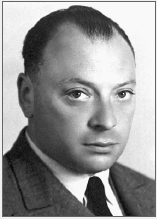We return now to Dirac’s relativistic adaptation of the Schroedinger equation, from which there is a second major surprise still waiting. In this complicated mathematical formalism, the picture was much less simple–even in free space, with no atoms or other potential wells to be bound in. Instead of a single complex value for the wave function, which was sufficient in the non-relativistic case Dirac’s equation required no fewer than four complex numbers for its wave function solutions. Two of these had positive energy, and two had negative energy.
Remember that he was trying to describe the spin 1⁄2 electrons. The two components with ordinary, positive energy fit nicely as the two possible orientations for the spin of the electron (spin up and spin down). The two components with negative energy did not lend themselves to any physical interpretation. Often in physics, when the mathematics implies the existence of something so nonsensical, we disregard the offender as an artifact of pure math. Dirac, however, chose to draw a different conclusion.
QUANTUM LEAP
In 1926, Dirac made a bet with Heisenberg on how quickly particle spin would be rigorously incorporated into quantum theory. Heisenberg wagered on three years, while Dirac opted for three months. Though Dirac’s bet turned out to be overly optimistic, it put him on the necessary trajectory to develop his relativistic quantum theory.

PAUL DIRAC
Paul Dirac suffered through an unhappy childhood under an oppressive father who placed little value in social interaction. In place of friends, Dirac found solace. He developed a particular interest in mathematics, and through his early years developed unparalleled skills and intuition in this area. This background contributed greatly to his later successes, since he was willing to put full faith in mathematics even when no physical interpretation was immediately evident.
When he was seventeen, Sir Arthur Eddington brought general relativity into the mainstream when he observed the bending of starlight predicted by Einstein. Dirac was smitten, and went on to master the mathematically complex topics of special and general relativity. This turned out to be the perfect preparation for his successful attempts to fully integrate relativity into quantum mechanics.
Though he made strong contributions during the early days of quantum mechanics, his efforts had been overshadowed by those of Schroedinger and Heisenberg. As a result of this, he was strongly motivated to develop something new and completely his own—a quest that would to his relativistic wave equation and his discovery of antimatter. Dirac shared the 1933 Nobel Prize with Erwin Schroedinger “for the discovery of new productive forms of atomic theory.”
Dirac decided to make creative use of the Pauli exclusion principle to try to deal with this problem. He postulated that what we call empty space was actually full of these negative energy particles. He imagined the energy scale extending down way below zero. The universe was therefore filled with a huge number of negative quantum states. Starting from the lowest negative energy, every state was occupied with the maximum number of negative energy electrons allowed by the exclusion principle.
In the ordinary situation, the highest occupied state would be right at zero energy. Dirac called this vast collection of unobserved negative energy electrons a “sea.” Combined with Pauli exclusion, this sea of occupied quantum states was necessary to explain why free electrons didn’t just make quantum jumps down to negative energies and disappear, emitting photons. They couldn’t do so since all the negative energy states were already occupied.
However, if one of these negative energy particles were to somehow get promoted to a positive energy state, it would appear as an ordinary electron. But the “vacancy” it left behind in the negative energy sea would also behave like a particle. This latter particle (or “hole” in the sea) could move around just like an electron. It would seem to have the same mass as an electron, but the opposite electric charge.
This “hole theory” predicted the existence of particles that had never been seen before, a sort of “anti-electron,” with virtually all the same properties as electrons except for an exactly opposite charge. The same theory predicted that with the addition of the appropriate amount of energy (to promote a negative energy electron out of the sea) an electron and an anti-electron (the hole) could appear together from otherwise empty space.
In 1932, one year after Dirac posited the existence of these exotic particles, the American physicist Carl Anderson detected them in cloud chamber detectors interacting with high energy cosmic rays from outer space. Anderson named such particles “positrons.” This was the first definite evidence for a whole new type of matter: antimatter.
Today, we no longer think about the sea of negative energy states. According to the theory, the filled sea can never be observed, only the vacancies. The predictions of the theory are the same whether you think of them as holes in the sea or actual antiparticles. Now that antimatter is a normal part of physics, it is much simpler to forget about the sea.
Leave a Reply